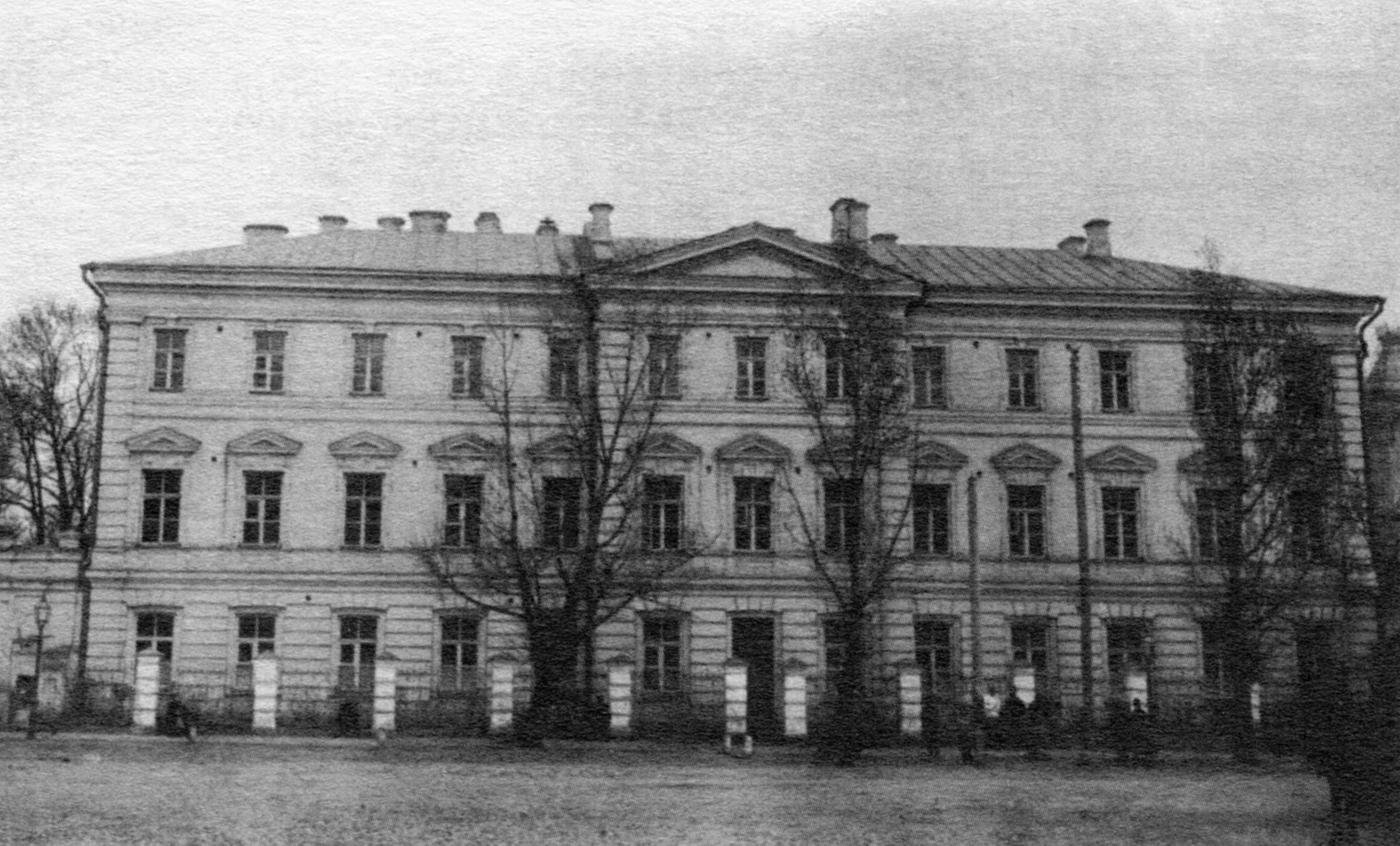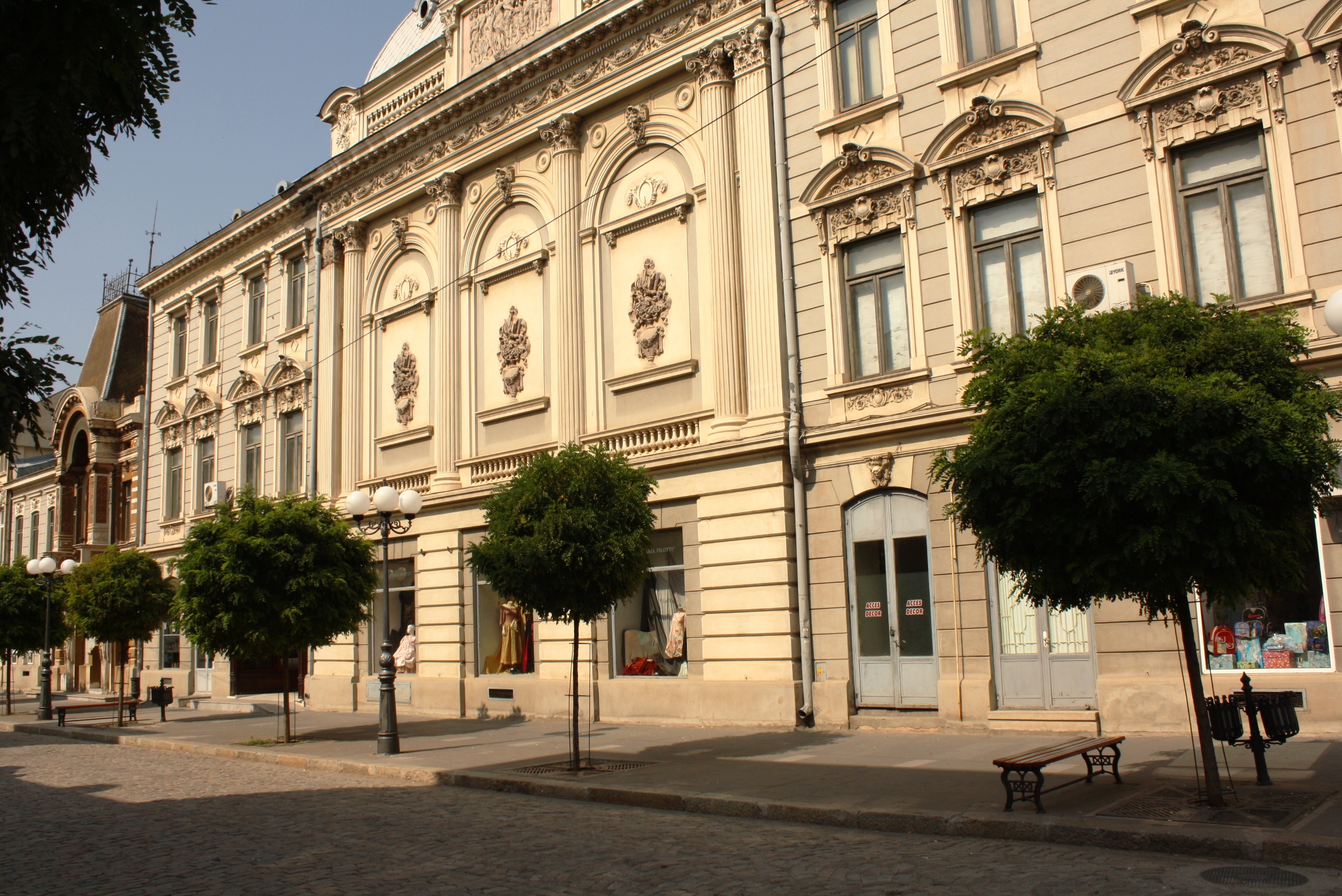|
Nathanael Ohridski
Nathanael of Ohrid, Nathanael of Plovdiv or Nathanael of Zograf, born Nesho Stanov Boykikev; (Bulgarian/ mk, Натанаил Охридски; 26 October 1820 – 18 September 1906) was a Bulgarian cleric, writer and revolutionary from Macedonia, one of the first supporters of literature in modern Bulgarian (as opposed to Church Slavonic) and one of the early figures of the Bulgarian National Revival. Biography Nathanael was born as Nesho (Nedyalko) Stoianov (Stankov) Boykikev in the village of Kučevište, near Skopje, then Ottoman Empire. He studied at the Kučevište monastery, and in 1835 went to study in Samokov. Then he continued his education in Prilep, where along with teacher George Samurkashev translate in Bulgarian language the treatise "The Service of Jews and their evil", published in 1839 by Theodosius of Sinai. In 1837 Boykikev become a monk in Zograf Monastery, named Nathanael. One year later he went to Chişinău, to study in the local theological schoo ... [...More Info...] [...Related Items...] OR: [Wikipedia] [Google] [Baidu] |
Kiev Theological Academy
The Kiev Theological Academy (1819—1919) was one of the oldest higher educational institution of the Russian Orthodox Church, situated in Kyiv, then in the Russian Empire (now Kyiv, Ukraine). It was considered as the most senior one among similar academies in Moscow, Saint Petersburg, and Kazan. It was located at the Kyiv Podol within the Kyiv Epiphany Monastery. In the Russian historiography, the Academy′s predecessor was the Academia Mohileana that was founded earlier in the 17th century. History Predecessor Collegium Mohileanum in Kyiv The Kiev Theological Academy traces its history back to 1615, when Yelisey Pletenetsky founded a school at the Brotherhood Monastery in Kyiv. Several decades later, Peter Mohyla, from 1632 an Orthodox Metropolitan of Kiev under the Patriarchate of Constantinople, merged it with a newly established Lavra school into the Mohyla Collegium (Latin: Collegium Kijovense Mohileanum). The Collegium alumni include Innokentiy Gizel, Lazar Barano ... [...More Info...] [...Related Items...] OR: [Wikipedia] [Google] [Baidu] |
Ohrid
Ohrid ( mk, Охрид ) is a city in North Macedonia and is the seat of the Ohrid Municipality. It is the largest city on Lake Ohrid and the List of cities in North Macedonia, eighth-largest city in the country, with the municipality recording a population of over 42,000 inhabitants as of 2002. Ohrid is known for once having 365 churches, one for each day of the year, and has been referred to as a "Jerusalem of the Balkans"."The Mirror of the Macedonian Spirit, Zlate Petrovski, Sašo Talevski, Napredok, 2004, , page 72: "... and Macedonia in the Cathedral Church St. Sofia in the Macedonian Jerusalem — Ohrid..." The city is rich in picturesque houses and monuments, and tourism is predominant. It is located southwest of Skopje, west of Resen (town), Resen and Bitola. In 1979 and in 1980 respectively, Ohrid and Lake Ohrid were accepted as Cultural and Natural World Heritage Sites by UNESCO. Ohrid is one of only 28 sites that are part of UNESCO's World Heritage that are Cultu ... [...More Info...] [...Related Items...] OR: [Wikipedia] [Google] [Baidu] |
Bulgarian Exarchate
The Bulgarian Exarchate ( bg, Българска екзархия, Balgarska ekzarhiya; tr, Bulgar Eksarhlığı) was the official name of the Bulgarian Orthodox Church before its autocephaly was recognized by the Ecumenical See in 1945 and the Bulgarian Patriarchate was restored in 1953. The Exarchate (a de facto autocephaly) was unilaterally (without the blessing of the Ecumenical Patriarch) promulgated on , in the Bulgarian church in Constantinople in pursuance of the firman of Sultan Abdülaziz of the Ottoman Empire. The foundation of the Exarchate was the direct result of the struggle of the Bulgarian Orthodox against the domination of the Greek Patriarchate of Constantinople in the 1850s and 1860s. In 1872, the Patriarchate accused the Exarchate that it introduced ''ethno-national'' characteristics in the religious organization of the Orthodox Church, and the secession from the Patriarchate was officially condemned by the Council in Constantinople in September 1872 a ... [...More Info...] [...Related Items...] OR: [Wikipedia] [Google] [Baidu] |
Macedonian Bulgarians
Macedonians or Macedonian Bulgarians ( bg, македонци or македонски българи), sometimes also referred to as Macedono-Bulgarians, Macedo-Bulgarians, or Bulgaro-Macedonians are a regional, ethnographic group of ethnic Bulgarians, inhabiting or originating from the region of Macedonia. Today, the larger part of this population is concentrated in Blagoevgrad Province but much is spread across the whole of Bulgaria and the diaspora. History The Slavic-speaking population in the region of Macedonia had been referred to both (by themselves and outsiders) as Bulgarians, and that is how they were predominantly seen since 10th, up until the early 20th century. According to Encyclopædia Britannica, at the beginning of the 20th century the Macedonian Bulgarians constituted the majority of the population in the whole region of Macedonia, then part of the Ottoman Empire. The functioning of the Bulgarian Exarchate then aimed specifically at differentiating ... [...More Info...] [...Related Items...] OR: [Wikipedia] [Google] [Baidu] |
Brăila
Brăila (, also , ) is a city in Muntenia, eastern Romania, a port on the Danube and the capital of Brăila County. The ''Sud-Est'' Regional Development Agency is located in Brăila. According to the 2011 Romanian census there were 180,302 people living within the city of Brăila, making it the 11th most populous city in Romania. The current mayor of Brăila is . History Origins Before 14th century, a small village existed in the place of today's Brăila, probably inhabited by fishermen and small merchants.Rădvan, p.248 The village fell to the Mongols during the 1241 Mongol invasion of Europe and it was under direct control of the rulers of Argeș in mid-14th century. A settlement called ''Drinago'' was found in several 14th century Catalan and Castillian portolan charts ( Angelino de Dalorto, 1325/1330 and Angelino Dulcert, 1339), as well as in the ''Book of Knowledge of All Kingdoms''. This may have been an erroneous transcription of ''Brillago'', a name which was l ... [...More Info...] [...Related Items...] OR: [Wikipedia] [Google] [Baidu] |
Bucharest
Bucharest ( , ; ro, București ) is the capital and largest city of Romania, as well as its cultural, industrial, and financial centre. It is located in the southeast of the country, on the banks of the Dâmbovița River, less than north of the Danube River and the Bulgarian border. Bucharest was first mentioned in documents in 1459. The city became the capital of Romania in 1862 and is the centre of Romanian media, culture, and art. Its architecture is a mix of historical (mostly Eclectic, but also Neoclassical and Art Nouveau), interbellum ( Bauhaus, Art Deco and Romanian Revival architecture), socialist era, and modern. In the period between the two World Wars, the city's elegant architecture and the sophistication of its elite earned Bucharest the nickname of 'Paris of the East' ( ro, Parisul Estului) or 'Little Paris' ( ro, Micul Paris). Although buildings and districts in the historic city centre were heavily damaged or destroyed by war, earthquakes, and even Nic ... [...More Info...] [...Related Items...] OR: [Wikipedia] [Google] [Baidu] |
Saints Cyril And Methodius
Cyril (born Constantine, 826–869) and Methodius (815–885) were two brothers and Byzantine Christian theologians and missionaries. For their work evangelizing the Slavs, they are known as the "Apostles to the Slavs". They are credited with devising the Glagolitic alphabet, the first alphabet used to transcribe Old Church Slavonic. After their deaths, their pupils continued their missionary work among other Slavs. Both brothers are venerated in the Eastern Orthodox Church as saints with the title of "equal-to-apostles". In 1880, Pope Leo XIII introduced their feast into the calendar of the Roman Catholic Church. In 1980, the first Slav pope, Pope John Paul II declared them co-patron saints of Europe, together with Benedict of Nursia. Apostolic letter of Pope John Paul II, 31 December 1980 Early career Early life The two brothers were born in Thessalonica, then located in the Byzantine province of the same name (today in Greece) – Cyril in about 827–828 and Methodius i ... [...More Info...] [...Related Items...] OR: [Wikipedia] [Google] [Baidu] |
Moravia
Moravia ( , also , ; cs, Morava ; german: link=yes, Mähren ; pl, Morawy ; szl, Morawa; la, Moravia) is a historical region in the east of the Czech Republic and one of three historical Czech lands, with Bohemia and Czech Silesia. The medieval and early modern Margraviate of Moravia was a crown land of the Lands of the Bohemian Crown from 1348 to 1918, an imperial state of the Holy Roman Empire from 1004 to 1806, a crown land of the Austrian Empire from 1804 to 1867, and a part of Austria-Hungary from 1867 to 1918. Moravia was one of the five lands of Czechoslovakia founded in 1918. In 1928 it was merged with Czech Silesia, and then dissolved in 1949 during the abolition of the land system following the communist coup d'état. Its area of 22,623.41 km2 is home to more than 3 million people. The people are historically named Moravians, a subgroup of Czechs, the other group being called Bohemians. Moravia also had been home of a large German-speaking populati ... [...More Info...] [...Related Items...] OR: [Wikipedia] [Google] [Baidu] |
Ivan Seliminski
Dr. Ivan Seliminski (1799 – 1866) was a prominent Bulgarian philosopher, scholar, teacher and medical doctor. Education He was born in Sliven in 1799. Later, he took the name of this town as his surname. His early school years were spent in a Greek school in Sliven. His secondary education was in Kidonia. He traveled in Europe. Teacher Seliminski returned to Sliven in 1825. He opened a school in which he taught physics. His school became one of the first Bulgarian lower-level secondary schools. Evacuation in Bessarabia On the eve of the Russian-Turkish War (1828–1829) he organized many Bulgarians to support the Russian army. With the creation of revolutionary organizations in Sliven and some other cities, Seliminski became the first major Bulgarian revolutionary. After the war Seliminski participated in Russian delegations. Many Bulgarian people left their homes and emigrated to the other side of the Danube in Vlahia. Ivan Seliminski opened a school and was a teacher ... [...More Info...] [...Related Items...] OR: [Wikipedia] [Google] [Baidu] |
Moldova
Moldova ( , ; ), officially the Republic of Moldova ( ro, Republica Moldova), is a Landlocked country, landlocked country in Eastern Europe. It is bordered by Romania to the west and Ukraine to the north, east, and south. The List of states with limited recognition, unrecognised state of Transnistria lies across the Dniester river on the country's eastern border with Ukraine. Moldova's Capital city, capital and largest city is Chișinău. Most of Moldovan territory was a part of the Principality of Moldavia from the 14th century until 1812, when it was Treaty of Bucharest (1812), ceded to the Russian Empire by the Ottoman Empire (to which Moldavia was a Vassal state of the Ottoman Empire, vassal state) and became known as Bessarabia. In 1856, southern Bessarabia was returned to Moldavia, which three years later united with Wallachia to form United Principalities, Romania, but Russian rule was restored over the whole of the region in 1878. During the 1917 Russian Revolution, B ... [...More Info...] [...Related Items...] OR: [Wikipedia] [Google] [Baidu] |



